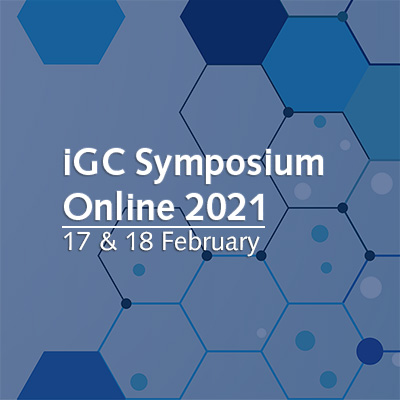
iGC Symposium Online 2021
Featuring leading experts in iGC from across the academic and industrial spectrum, the Conference Agenda will explore the latest findings and insights for iGC, as well as the innovative applications you can use in your own work.
| Responsible | Daniel Villalobos |
|---|---|
| Last Update | 16/02/2023 |
| Completion Time | 7 hours 25 minutes |
| Members | 137 |

Talk: Powder Characterization in Additive Manufacturing
Speaker: Dr. Kristian Waters, McGill University

Speaker: Dr. Kristian Waters, McGill University

Speakers: Dr. Jeremiah Woodcock, NIST Cellulose nanomaterials (CN) shows great promise for commercial applications in a broad range of products including paper, polymer composites, electronics, paints, concreate, and insulation. A wide variety of chemistries have been developed to label and track these CN. This includes the use of such reactions as dichlorotriazine/alcohol, Schiff base, and esterification reactions with good success. However, many of the labeling strategies result in a significant change in surface energy of the cellulose. In such as food packaging, drug delivery systems, and biocompatibility, these changes are not desirable. A significant enough change in surface energy results in different adhesion characteristics which can have adverse effects not readily forecasted. To this end, characterizations tools that can track extent of surface modification at nanomolar concentrations of the bulk material are needed. In this work, the surface of cellulose nanofibers was modified using 13C enriched ethyl iodide using a heterogenous process of gas phase reagent and concentrated solution of substrate. The gas phase ensures uniform coverage of the substrate and the ability to control small concentrations in a give volume. The modification of surface energy was monitored using iGC-SEA and quantified with 13C solid state NMR. The iGC was found to be quite sensitive to these small changes in surface chemistry.

... Surface Free Energy Distribution Profiles Speaker: Dr. Vibha Puri, Bristol-Myers Squibb Unanticipated changes in the surface properties of mechanically-activated micronized drugs are a leading cause of variability in drug product performance. To address this issue, a post-micronization annealing step is often introduced. However, there is limited understanding of the material changes that occur during annealing. We present a case study on the use of surface free energy (SFE) measured by inverse gas chromatography to monitor surface-specific changes during annealing. We also use other orthogonal techniques (atomic force microscopy, RH perfusion microcalorimetry) to conduct additional analysis. Further, the SFE descriptor enabled us to differentiate the extent of mechanical activation of the neat micronized drug and co-micronized drug-excipient blends. This study’s primary contribution is to identify SFE as a tool for characterizing post-micronization material changes over storage. Vibha Puri1, Jagdeep Shur2, and Ajit S. Narang3 1Drug Product Development, Bristol-Myers Squibb, USA, 2Nanopharm Ltd, an Aptar Pharma Company, U.K., 3Small Molecule Pharmaceutics, Genentech, Inc., USA